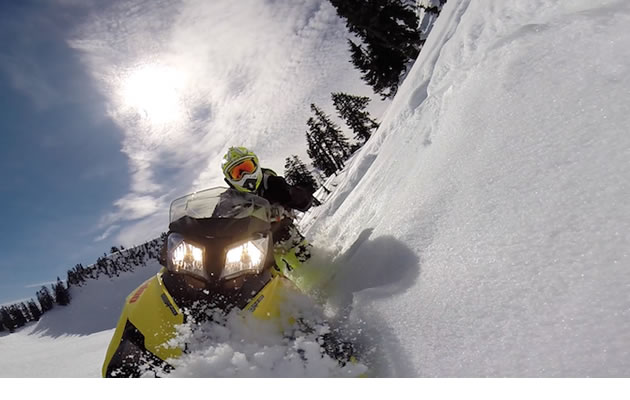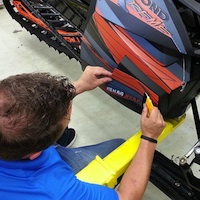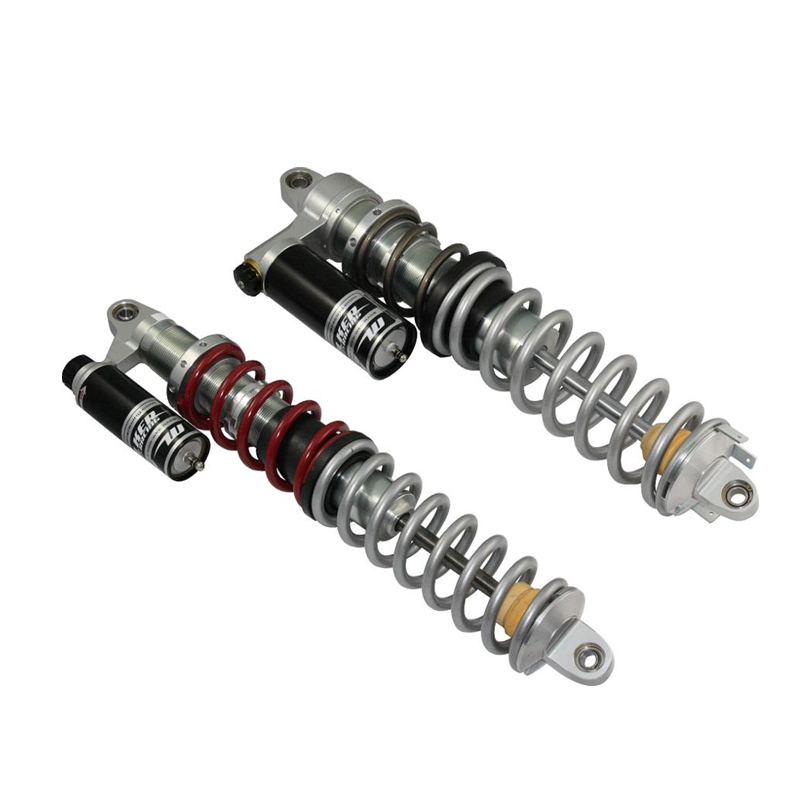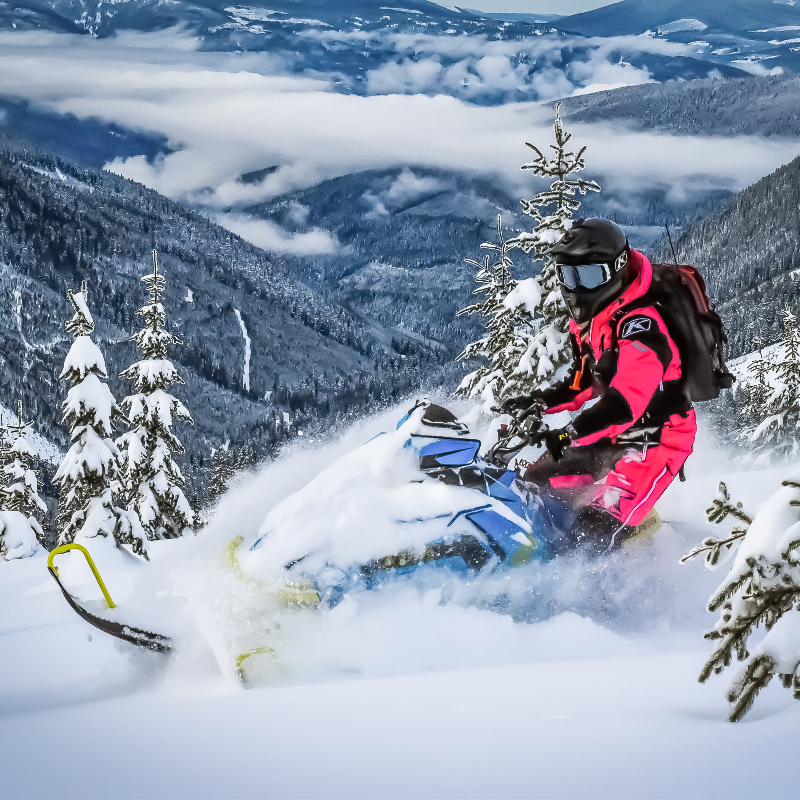I am one lucky boy! Many would believe it is because I get to ride the best sleds on the planet in the best place on earth, and they would be right. But I am for another reason.
Being a backcountry rider for Ski-Doo allows me to work alongside some of the most talented people in the industry—the engineers, the test riders and the marketing team—where I learn a ton of incredible information. That is what truly makes my role very special.
BRP could have sat idle with the Ski-Doo line in 2015 and depended on its proven XM platform and they would have sold a ton of sleds; however, this is just not in their DNA.
So as we saw a month and a half ago they pushed the industry further than it has ever been pushed by offering a Summit X with a T3 Package in 163- and unbelievable 174-inch lengths.
Many people could not believe what Ski-Doo did and some still don’t believe the T3 163/174 handles as easy and nimble as its designers planned—even after seeing the daily recaps of the media and real riders experiences.
The fact is it does, and I have personally had the chance to play with these amazing sleds in everything from boilerplate ice to my deep powder backyard of B.C.
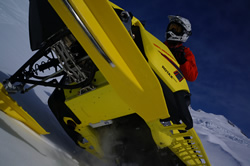
The making of a deep powder machine
The Ski-Doo engineers’ first priority with the new T3 package was to create a sled that could go anywhere in the deepest snow. They also wanted to shave weight and they did that by the following:
Using the new RAS2 Front suspension, they saved two pounds and as an added bonus, the sled corners and handles bumps even better than before.
- The exhaust canister was totally redone to lose five pounds, but it still provides the same low acoustics.
- The chaincase and gear was machined to save weight, especially rotating weight.
- The track was refined to eliminate more rubber where the rods were eliminated in the flex-edge track, and slim slots were added to further reduce rotating mass.
- The rear arm in the skid was made lighter, along with the rear idler wheels, and the front ones were eliminated and replaced with stock scratchers that both lubricate the hyfax and push snow into the track and heat exchanger to cool the engine.
- The rear heat exchanger was also reduced by 50 per cent, but has the same cooling capabilities. How is that possible? The front half of the heat exchanger does not really do much anyway, due to the fact that is upfront and is mainly used to get coolant to the back. By eliminating it, Ski-Doo reduced the weight but kept the most important part, which is why Summits with the T3 package will stay as cool as a regular 2014 Summit.
Other tweaks
.jpg) The engineers also had to do a few things to balance the 163/174 with T3 packages and keep the awesome dynamic behaviour, which Summit (or Ski-Doo) customers have been accustomed to.
The engineers also had to do a few things to balance the 163/174 with T3 packages and keep the awesome dynamic behaviour, which Summit (or Ski-Doo) customers have been accustomed to.
They did this by using a narrower-at-the-tip DS3 ski that has a 12 millimetre deeper keel and carves through snow with ease. The narrow tipped ski is more nimble, since the impacting input of a stick or old track is closer to the spindle, therefore lessening the impact felt at the handlebars.
A wider slip-on comes with the sled that can be added for super light snow conditions, like in Colorado, Wyoming or Utah. This slip-on is something the customer can tune their skis with to their own personal preference for conditions and where they live.
The chaincase was extended by 27 millimetres, a seven-tooth driver was chosen and the rear skid was lowered by one inch to allow the huge lugged track to easily flow through the tunnel and keep the snow and air moving. The only difference between the 163 and 174 is the rear arm of the 174 has been moved back 5.2 inches to deal with its increased length.
Which one is right for me?
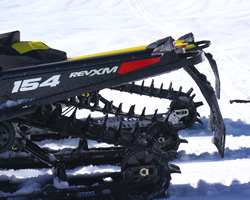 The biggest questions I get asked with the new T3 XM 163/174 are “Will they be hard to handle?” and “Which one should I choose?”
The biggest questions I get asked with the new T3 XM 163/174 are “Will they be hard to handle?” and “Which one should I choose?”
The answer is both sleds will be awesome, and in fact they are both easier to ride than the current 2014 Summit models. The reason is that the T3 sled is as light as the current sleds. It is higher, so the tipping point is easier, and because of the track length and lug height, the sled has more traction and flotation.
You can carry less speed or momentum, look at the lines and then hit them without digging in.
If someone is really on the fence between the 163 or 174, then a good suggestion is that if you ride fewer times than 15 to 18 days a year, go with the 163. If you ride more than that, go with the 174.
There is no doubt that the 174 will and does push a bit more, but once you ride it and get used to that, you won’t notice it, and you definitely won’t notice it unless you're going back and forth between the 163 and 174 every day.
What about horsepower?
Another question I get is related to power: is there enough power for these big tracks and lugs?
Track speed does matter, but so does gearing and driver size, which is why this T3 works so well. I often use the analogy of a trials bike with 24 horsepower and a 450 motocross bike with 50 horsepower. Even though the trials bike has less horsepower, it will still out-climb steep hills, due to the fact that it hooks up way better than the 450.
It is the same with these sleds. The traction on both is so unbelievable that many will feel the engine has more power, not less.
The only real question for those who are spring ordering this awesome sled is what colour you’re going to buy: black or sunburst. Either way you’re going to look good on top of the mountain.
